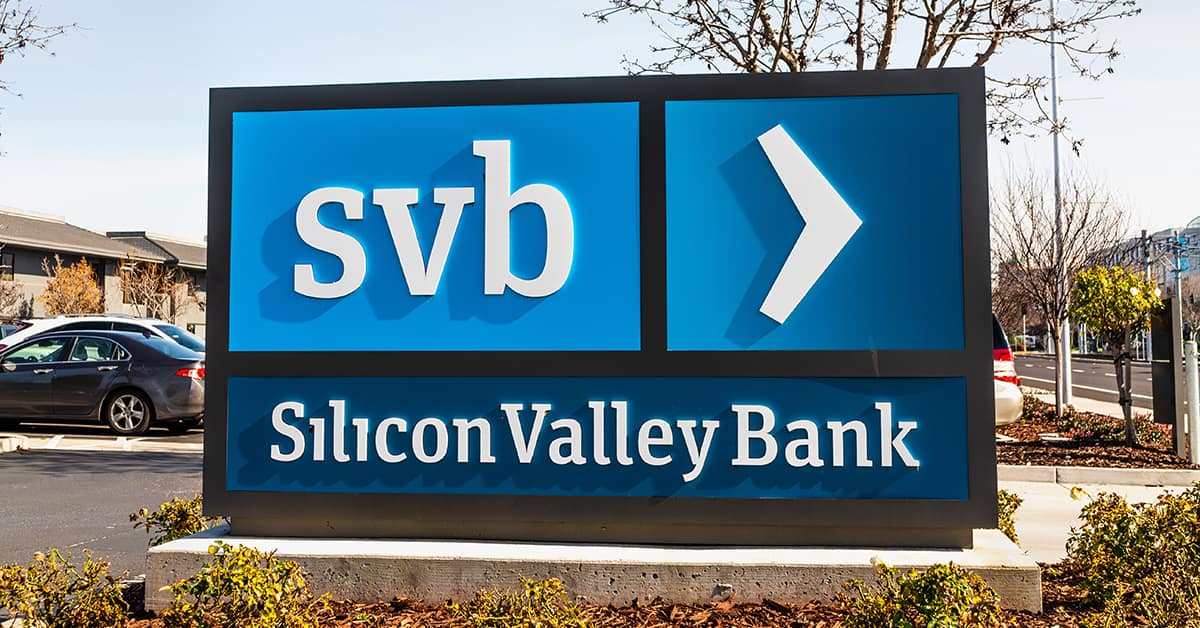The FDIC’s sudden takeover of both Silicon Valley Bank and Signature Bank casts a shadow, no matter what you call it.

Silicon Valley Bank (SVB), the 16th largest bank in the US, had an exceptionally high number of uninsured deposits—about 89%, or $155 billion. So when it went into receivership on Friday, March 10, on the heels of a massive, $42-billion bank run, the nail-biting began.
Finance pros, pundits and legislators called on the federal government to guarantee protection for all deposits—even those that exceed the $250,000 threshold—whether they were insured or not.
When the Biden Administration obliged, at least on a temporary basis, the term “bailout” started cropping up in headlines, editorials and Twitter feeds. It recalled the alarming stretch of 2008 to 2012 when the Federal Deposit Insurance Corporation (FDIC) took over some 465 banks, and numerous businesses, including car manufacturers, benefitted from the $700-billion Troubled Asset Relief Program while homeowners floundered.
SVB isn’t the only casualty. The FDIC’s recent seizure of Signature Bank in New York and the ongoing liquidation of crypto lender Silvergate Capital don’t bode well for the financial sector. On Monday, most regional bank stocks lost market value. Reports even circulated that First Republic was next in line to fall, since, like SVB, it catered to a venture-backed Silicon Valley clientele.
Vivek Ramaswamy, an asset manager, called SVB a “moral hazard,” and in comments to the Wall Street Journal accused the firm’s management of “taking excessive risk and expecting political favors and bailouts.”
The Biden administration’s effort differs from the 2008 largesse in key features, according to Tyler Griffin, managing director at Restive Ventures. Currently, SVB’s bond- and equity-holders are all getting wiped out. Furthermore, management is out of a job. “I don’t think we’re looking at systemic collapse here; the Treasury and Fed did the right thing,” Griffin says. “This was not a bailout.”
SVB wasn’t overloaded with debt, but by investing primarily in Treasuries, was punished by rising interest rates. During the 2008 financial crisis, bank managers were complicit in making risky bets with devastating results and the culprits remained unscathed. The response at the time was accurately called a bailout, Griffin explains.
The US Treasury is doing what it can to quell panic. Treasury Secretary Janet Yellen appeared on TV Sunday arguing that the American banking system was “safe, well-capitalized and resilient.” “No losses associated with the resolution of Silicon Valley Bank will be borne by the taxpayer,” read the official statement.
Others disagree. Bert Ely of Ely & Company referred to SVB and Signature as “two non-systemically important failed banks,” in remarks to Axios and predicts the Treasury’s actions will have “tremendous long-term implications” on the US economy.
The US government has a knack for protecting uninsured depositors. Of the banks that folded in this century, it was only IndyMac’s uninsured depositors that didn’t receive the entirety of their funds. And Washington Mutual deposits remained whole thanks to a deal with JPMorgan Chase.
“It really depends on the definition of bailout,” says David Bizar a partner at law firm Seyfarth Shaw. The SVB scenario is not a bailout in the traditional sense, he argues, since the funds being put back in the depositor accounts are coming from US Treasury sources, such as the FDIC insurance fund. Technically, the funds are not being drawn from taxes, and thus not “borne by the taxpayer.”
However, those funds will have to be replenished from somewhere, Bizar notes, asking, “Where’s the somewhere?” The FDIC could implement a surcharge to dues paid by members, which are its primary source of funding. The banks would pass those costs to customers.



